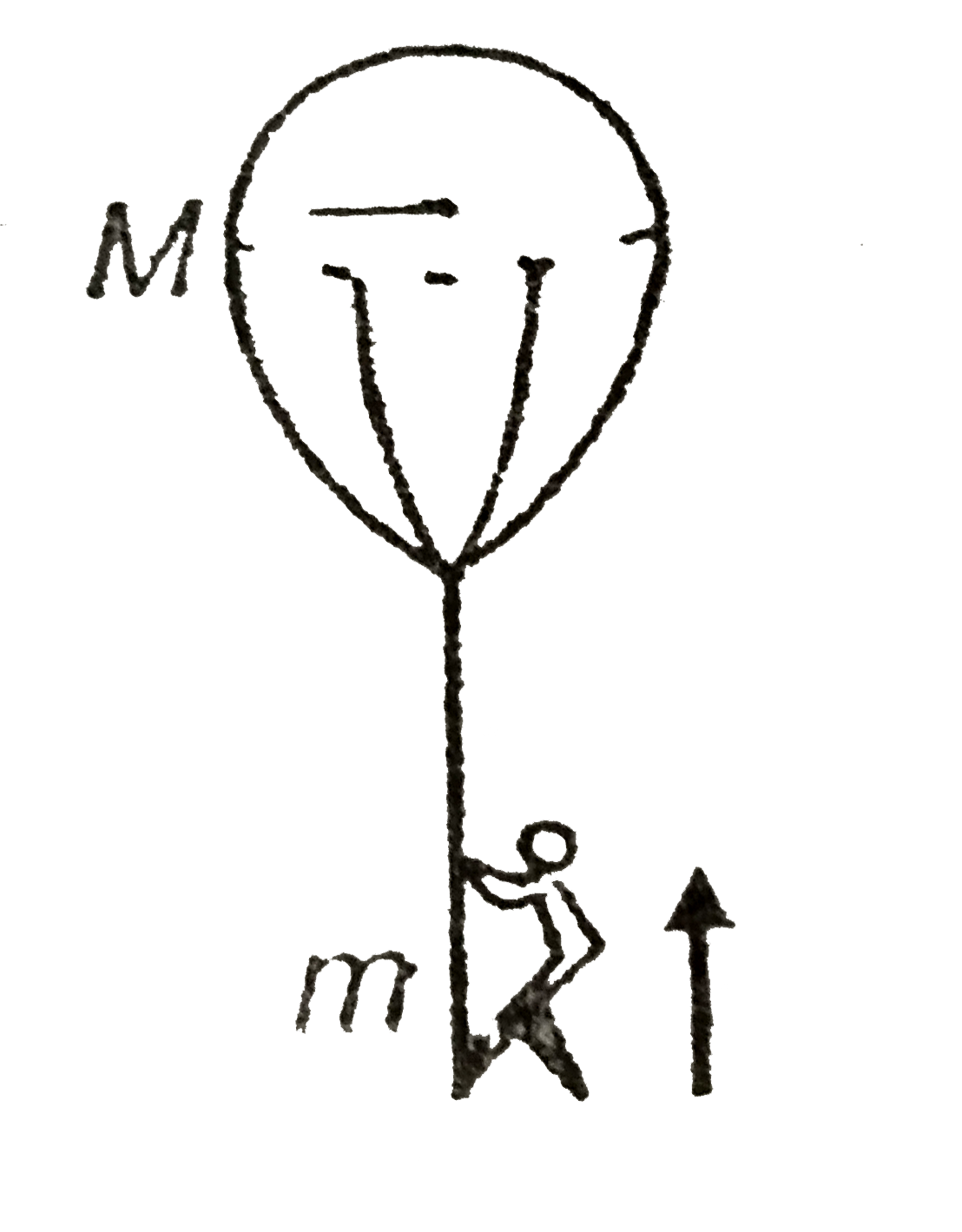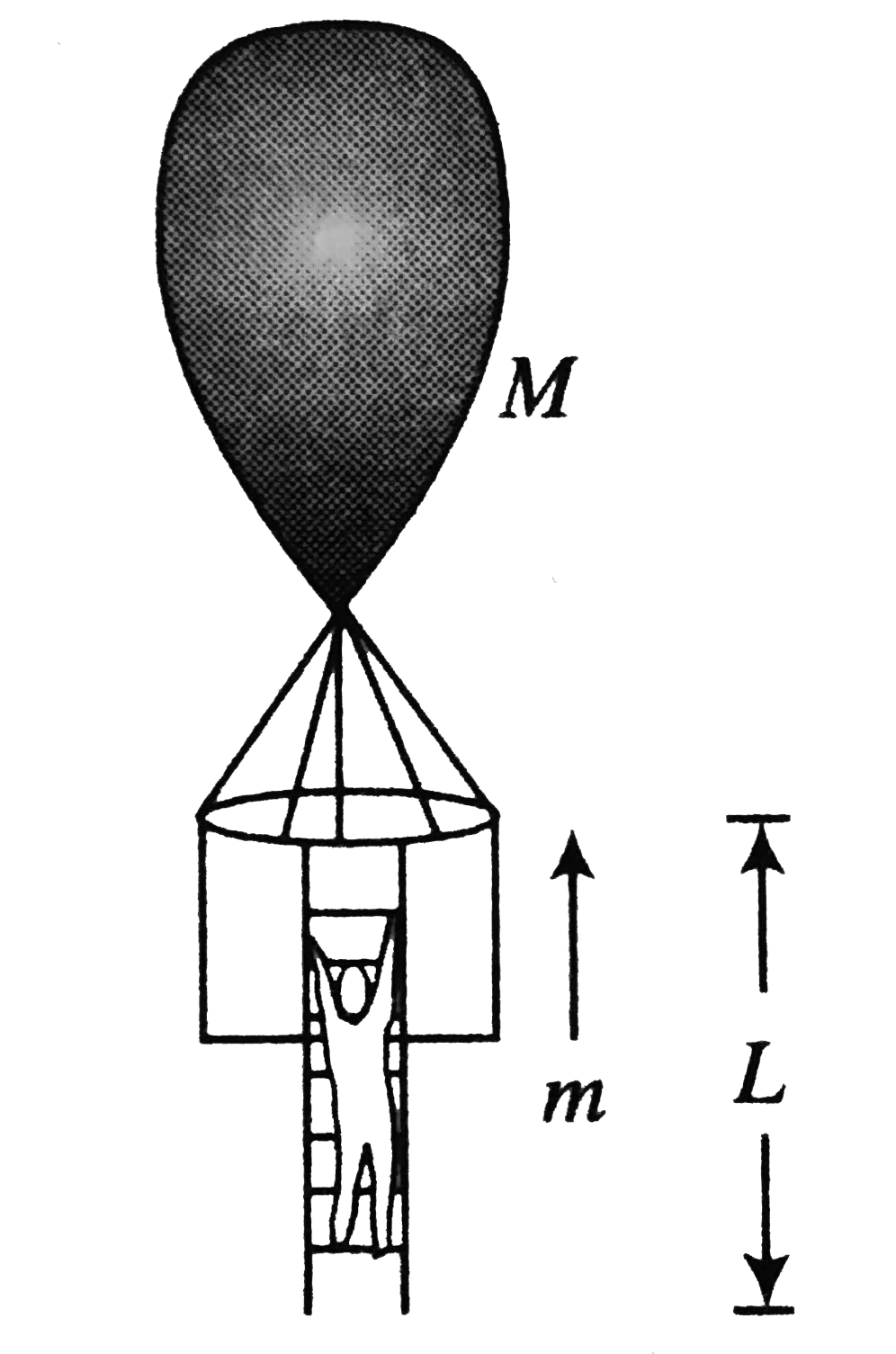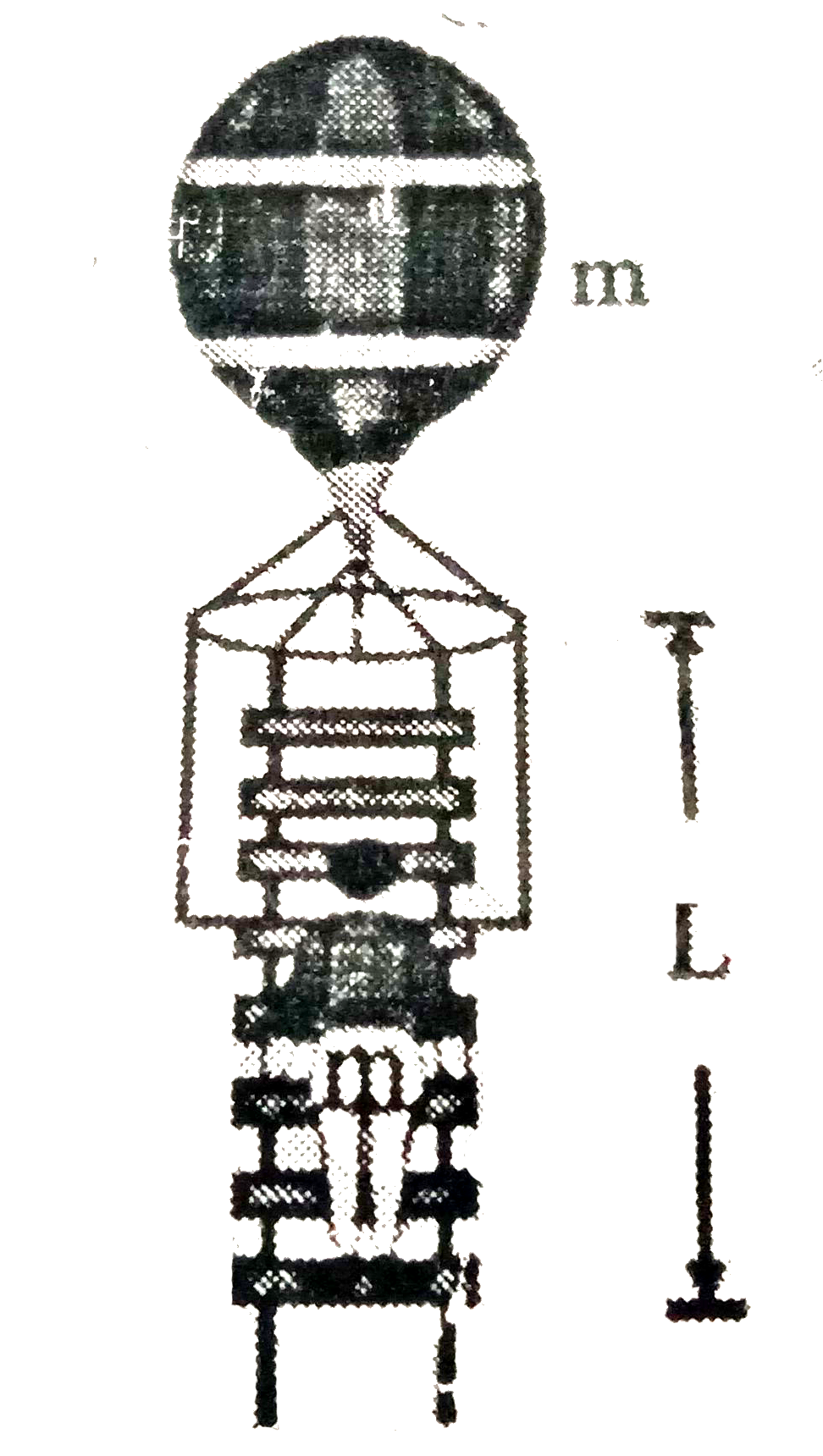A ladder of length l carrying a man of mass m at its end is attached to the basket of a balloon of mass M. The entire system is in equilibrium in the air. As the man climbs up the ladder into the balloon, the balloon descends by a height h.
The potential energy of the man
(a) Increases by mg(l−h)
(b) Increases by mgl
(c) Increases by mgh
(d) Increases by mg(2l−h)
The correct Answer is:A
When the man climbs the ladder of length l, the balloon descends by height h. So net height gained by the man is l−h. Hence, gain in potential energy of the man is mg(l−h).
Work done by man: W1=mgl
Inclination in potential energy of balloon=work done by man -increase in potential energy of man, i.e.,
mgl−mg(l−h)=mgh
Topper's Solved these Questions
- WORK, POWER & ENERGYBook:CENGAGE PHYSICSChapter:WORK, POWER & ENERGYExercise:Integer
Explore 14 Videos
- WORK, POWER & ENERGYBook:CENGAGE PHYSICSChapter:WORK, POWER & ENERGYExercise:Archives (sinble Correct )
Explore 19 Videos
- WORK, POWER & ENERGYBook:CENGAGE PHYSICSChapter:WORK, POWER & ENERGYExercise:Multiple Correct
Explore 25 Videos
- VECTORSBook:CENGAGE PHYSICSChapter:VECTORSExercise:Exercise Multiple Correct
Explore 5 Videos
Similar Questions
A man of mass m is suspended in air by holding the rope of a ballon of mass M. As the man climbs up the rope, the ballon

View SolutionA man of mass M hanging with a light rope which is connected with a balloon of mass m. the system is at rest in air. When man rises a distance h with respect to balloon find. The distance raised by man
View Solution
Knowledge Check
A ladder of length l carrying a man of mass m at its end is attached to the basket of a balloon of mass M. The entire system is in equilibrium in the air. As the man climbs up the ladder into the balloon, the balloon descends by a height h.
The potential energy of the balloonA(a) Decreases by mghB(b) Increases by mghC(c) Increases by mgl(l−h)D(d) Increases by mglA ladder of length l carrying a man of mass m at its end is attached to the basket of a balloon of mass M. The entire system is in equilibrium in the air. As the man climbs up the ladder into the balloon, the balloon descends by a height h.
The work done by the man isA(a) mglB(b) mghC(c) mgD(d) mg(l−h)A rope ladder of length L is attached to a balloon of mass M. As the man of mass m climbs the ladder into the balloon basket, the balloon comes down by a vertical distance s. Then the increase in potential energy of man divided by the increase in potential energy of balloon is
 AL−ssBLsCsL−sDL−s
AL−ssBLsCsL−sDL−s
A cart of mass M is tied to one end of a massless rope of length 10m. The other end of the rope is in the hands of a man of mass M2. The entire ststem is on a smooth horizontal surface. If the man pulls the cart by the rope then find the distance by which the man will slip on the horizontal surface before the man and the cart will meet each other.
View SolutionA rope ladder of length L is attached to ballon of mass m. As the man of mass m clims the ladder in to the lballon basket the ballon comes donws by a vertical distance s. Then increase in potential energy of man divided by increase inn potential energy of ballon is

View SolutionA cart of mass M is tied to one end of a massless rope of length 10m. The other end of the rope is in the hands of a man of mass M. The entire system is on a smooth horizontal surface. The man is at x=0 and the cart at x=10m. If the man pulls the cart by the rope, the man and the cart will meet at the point
View SolutionA man of mass m, standing at the bottom of the staircase of height L climbs it and stands at its top.
View SolutionWhich of the following statements is true ?
(i) A car of mass M is tied by one end of a massless rope of length 10m. The other end of the rope is in the hands of a man of mass M. The entire system is on a smooth horizontal surface.The man is at x=0 and the cart at x=10m. If the man pulls the cart by the rope, the man and the cart will meet at the point x=5m.
(ii) Two spherical bodies of mass M and 5M and radii R and 2R, respectively , are released in free space with initial separation between their centers equal to 12R. If they attract each other due to the gravitational force only , then the distance covered by the smaller body just before collision is 7.5R.
(iii) Two skaters A and B , having masses 40kg and 60kg , respectively stand facing each other 10m apart on a horizontal smooth surface. They pull on a rope stretched between them , the distance covered by A, when skaters meet is 6m.
(iv) A ballon (mass M) is attached to light rope of length L. To the other end of the rope a boy (mass m) is hanging in air. The system is at rest. The distance travelled by the balloon (in downward direction) when the boy touches the ballon is MLM+m.
View Solution